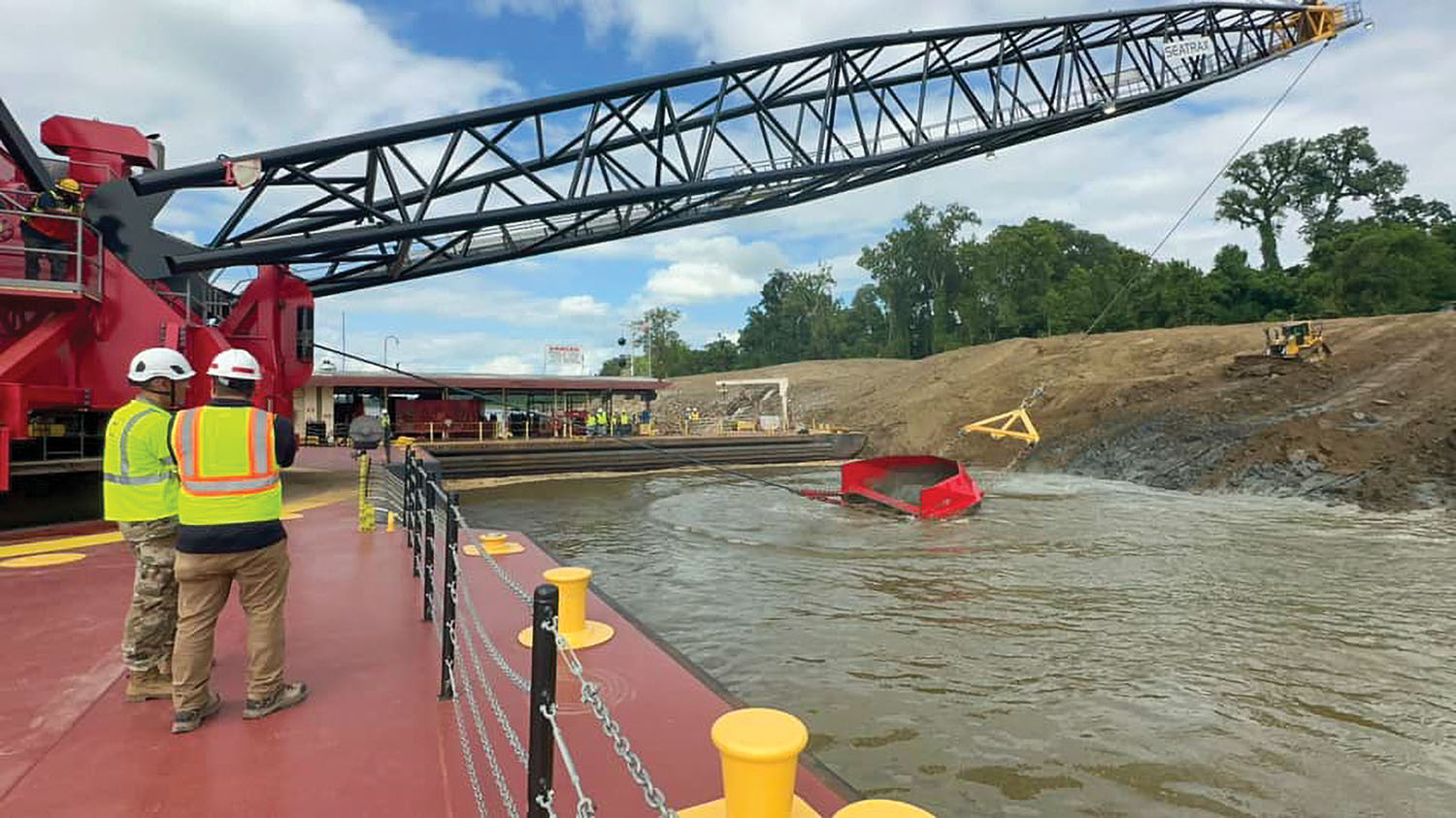The Memphis Engineer District’s new bank grader, Grader 1, is already hard at work helping to provide riverbank stabilization.
Delivered to Memphis in April and christened in May, Grader 1 works with the Vicksburg District’s Mat-Sinking Unit in revetment operations, stabilizing the banks of the Lower Mississippi River by the placement of articulated concrete mats from the beginning of the angled edge to the bank’s “toe,” where it begins to flatten out on the bottom.
Revetment operations assist with both navigation and flood mitigation. Without the revetment work and the regional channel improvement project–through which the Memphis, Vicksburg and New Orleans districts work together–over time the Mississippi would cut a new course, changing the channel and potentially damaging levees that protect communities.
Following the clearing of brush from the riverbank, Grader 1 comes in to grade the bank to the designed slope. That slope supports the sinking of articulated concrete mattress, performed by the Mat-Sinking Unit. Fabrication of a new Mat-Sinking Unit, to be called Armor 1, is underway, and it is expected to be complete by next season to work with Grader 1, but Grader 1 is currently working with the old unit.
Replaces 74-Year-Old Unit
Grader 1, delivered at a cost of $25.5 million, replaces the Memphis District’s 74-year-old bank grader. It somewhat resembles a barge-mounted crane, in that it has a boom. However, it is able to throw out a gigantic bucket with one cable and pull it back in toward the barge with another cable.
A towboat, usually the Memphis district’s mv. George C. Grugett, pushes it up and down the river.
Memphis District Commander Col. Brian Sawser, Donny Davidson, deputy district engineer for programs, Operations Division Chief Andrea Williams, Channel Improvement Project Manager Zach Cook and Regional Channel Improvement Coordinator Jake Storz traveled to Mhoon Bend, Miss., to see Grader 1 at work in July.
“The hope is that by operating at this site, we can leave knowing we can complete the mission under any conditions encountered on the Mississippi River,” Cook said. “This is one reason why Mhoon Bend is the best place to do the calibration exercises.”
As the grading unit moves to its assigned locations, it will encounter different soil types, river currents and depths for grading.
“Everything is going well so far,” Cook said. “Initially the bucket didn’t have as much bite as the old one, and modifications were made to the weight of the bucket to balance out the lift line on the boom and support the bucket’s ability to dig. The calibration is still ongoing with minor tweaks to ensure that the machine is working optimally.”
Grader 1’s crew went through a week of classroom training, followed by three weeks of training from Seatrax Trainer Larry Nofsinger to make sure operators, winchmen, mechanics, electricians and other crewmembers knew how to operate the unit and also train others on its effective use.
Jessica Haas, public affairs specialist for the Memphis Engineer District, contributed to this report.
Caption for photo: The new, $25.5 million bank grader, named Grader 1, is at work for the first time in revetment operations on the Lower Mississippi. It replaces a 74-year-old grader. (Photo courtesy of Memphis Engineer District)




